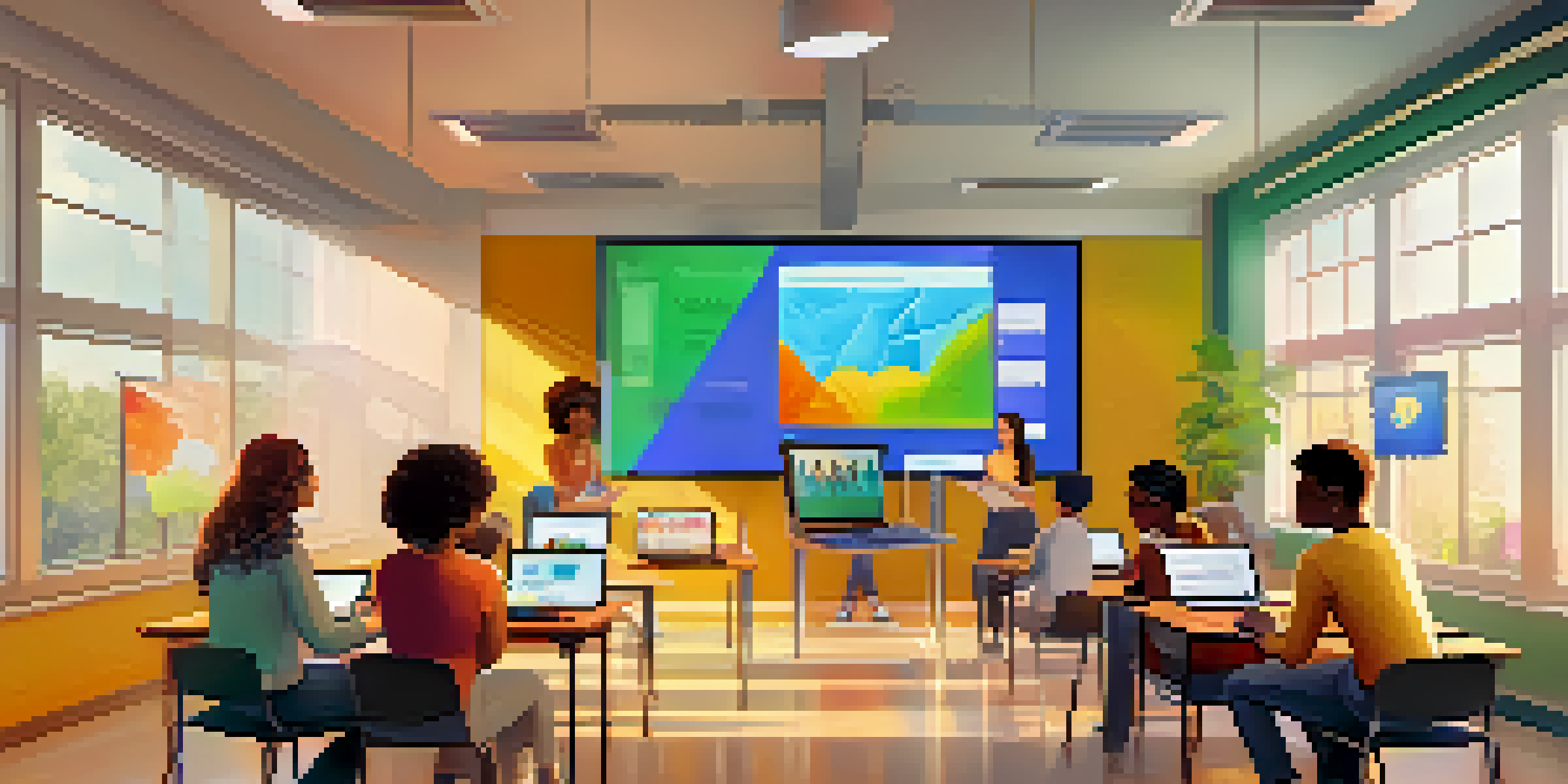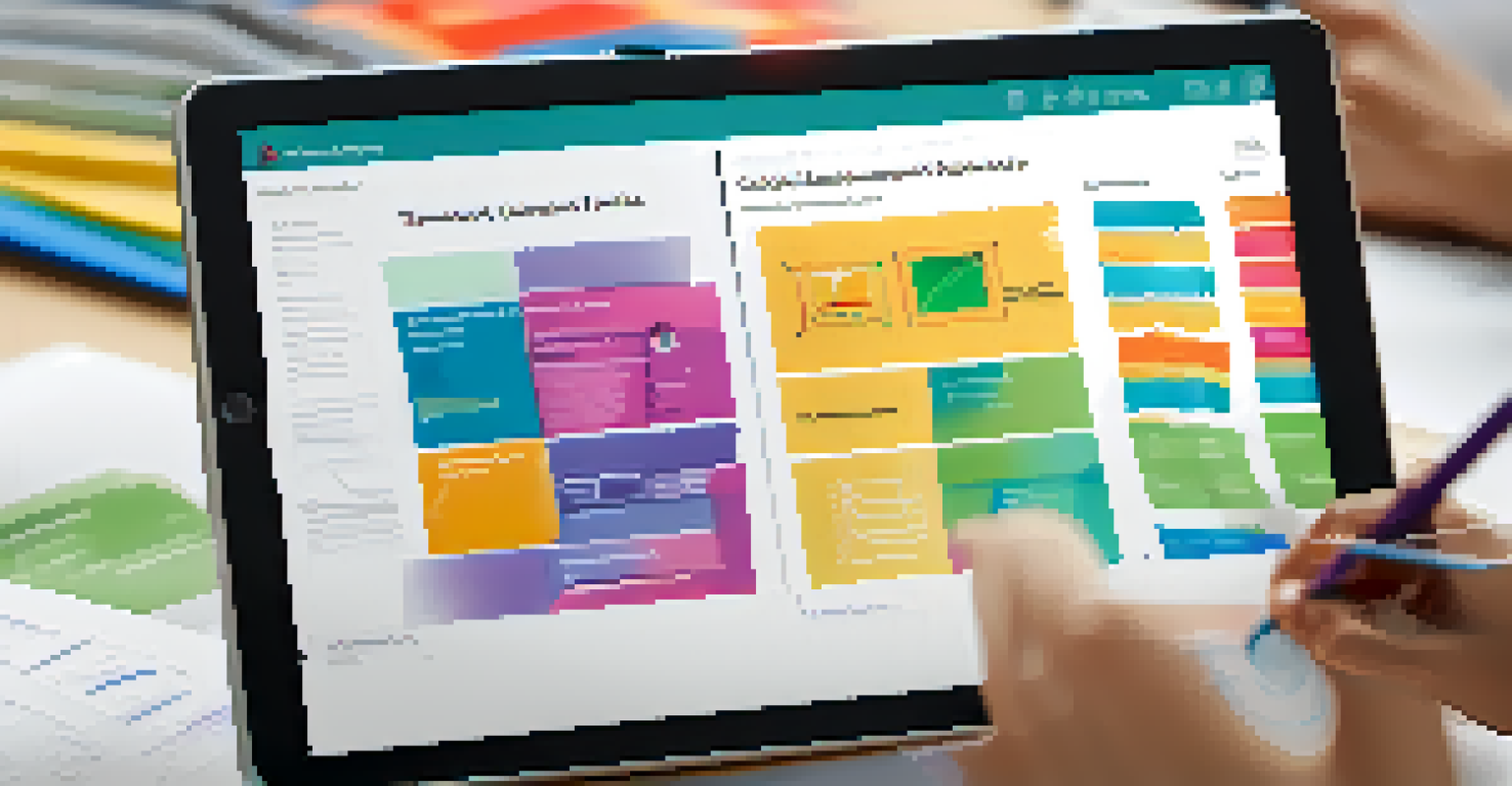Collaborative Learning Through Digital Assessment Tools

Understanding Collaborative Learning in the Digital Age
Collaborative learning is an educational approach that encourages students to work together to solve problems and complete tasks. In the digital age, this concept has evolved, with technology providing new platforms for interaction and cooperation. Tools such as online discussion forums, shared documents, and virtual classrooms have become essential in facilitating this learning style.
Collaboration allows teachers to capture each other's fund of collective intelligence.
When students collaborate online, they not only engage in knowledge sharing but also develop important skills like communication, critical thinking, and teamwork. These skills are increasingly vital in today's interconnected world, where working effectively with others is a key to success. Digital environments provide a safe space for students to express ideas and challenge one another's perspectives.
As we dive deeper into the role of digital assessment tools, it's crucial to recognize how these technologies can enhance collaborative learning. By integrating assessments that promote group work, educators can create a more dynamic and interactive educational experience.
The Role of Digital Assessment Tools in Education
Digital assessment tools are designed to evaluate student performance efficiently and effectively. They allow educators to gather data on student understanding in real time, making it easier to identify areas where students may need additional support. These tools range from quizzes and surveys to more complex platforms that can analyze group work.

One of the significant advantages of digital assessments is their ability to provide immediate feedback. This rapid response helps students understand their strengths and weaknesses and encourages them to adapt their learning strategies accordingly. In a collaborative setting, instant feedback can spark discussions among peers, further enhancing the learning process.
Collaborative Learning Thrives Online
Digital tools enhance collaborative learning by providing platforms for interaction, fostering communication, and building critical skills.
Moreover, these tools can facilitate varied assessment formats, catering to different learning styles. Whether through traditional quizzes or interactive projects, digital assessments can engage students and promote a deeper understanding of the material.
Benefits of Collaborative Learning with Digital Tools
One of the primary benefits of combining collaborative learning with digital assessment tools is the enhancement of engagement. Students are often more motivated to participate when they can interact with their peers in a virtual environment, especially if they feel a sense of community. This engagement can lead to improved academic outcomes.
The greatest danger in times of turbulence is not the turbulence; it is to act with yesterday's logic.
Additionally, digital collaboration fosters a sense of accountability. When students work together on assignments, they are more likely to take ownership of their contributions. This shared responsibility encourages them to put forth their best efforts, knowing that their peers are counting on them.
Furthermore, collaborative learning allows for diverse perspectives to emerge. When students with different backgrounds and experiences come together, they can challenge each other's ideas and broaden their understanding of complex concepts, which is particularly enhanced by digital platforms.
Best Practices for Implementing Digital Assessment Tools
To effectively incorporate digital assessment tools into collaborative learning, educators should begin by setting clear objectives. Defining what they want to achieve ensures that the assessments align with the learning goals. This clarity will guide students in their collaborative efforts and keep them focused.
Another best practice is to select user-friendly tools that facilitate interaction. Platforms that are intuitive and accessible can significantly enhance student participation and reduce frustration. It's also essential to provide training and resources to help students become comfortable with the technology.
Digital Assessments Boost Engagement
Immediate feedback from digital assessment tools encourages student participation and accountability in collaborative settings.
Lastly, fostering a culture of feedback is vital. Encouraging students to give and receive constructive feedback promotes continuous improvement and strengthens collaborative relationships. This process not only helps students grow individually but also enhances the group’s overall performance.
Challenges of Collaborative Learning with Digital Tools
While there are numerous benefits to digital collaborative learning, challenges also exist. One major issue is the potential for technical difficulties, which can disrupt the flow of group work. It's important for educators to be prepared for these challenges by having backup plans and alternative methods of communication.
Another challenge is ensuring equitable participation among all group members. In some cases, certain students may dominate discussions while others remain passive. To combat this, educators can implement structured roles within groups to ensure everyone has a chance to contribute.
Finally, there is the hurdle of varying skill levels among students. Some may be more adept at using digital tools than others, leading to frustration or disengagement. Encouraging peer mentorship can help bridge this gap, allowing more experienced users to support their classmates.
Future Trends in Digital Assessment Tools and Learning
As technology continues to evolve, so too will the tools available for digital assessment and collaborative learning. Trends indicate a growing emphasis on artificial intelligence, which can offer personalized feedback and tailor assessments to individual student needs. This customization can enhance the learning experience and ensure that all students are adequately challenged.
Additionally, we can expect to see more integration of gamification in digital assessments. By incorporating game-like elements, educators can increase student motivation and engagement, making collaborative learning even more enjoyable. This approach can also foster healthy competition and camaraderie among peers.
Future Tech Shapes Learning Experience
Emerging technologies like AI, gamification, and VR are set to transform collaborative learning by personalizing experiences and enhancing engagement.
Lastly, the use of virtual reality (VR) and augmented reality (AR) tools is on the rise. These immersive technologies can create realistic scenarios for collaboration, allowing students to engage in problem-solving in a virtual environment. As these tools become more accessible, they will undoubtedly reshape the landscape of collaborative learning.
Conclusion: Embracing Collaborative Learning and Assessment
In conclusion, collaborative learning through digital assessment tools offers a wealth of opportunities for students and educators alike. By facilitating interaction and engagement, these tools can create a more dynamic and inclusive learning environment. As we embrace technology in education, it's important to adapt our approaches to meet the needs of diverse learners.
The benefits of collaborative learning extend beyond academic achievements, as students develop critical life skills that will serve them well in their future endeavors. By working together, they learn to communicate effectively, think critically, and respect various viewpoints.

Ultimately, the integration of digital assessment tools with collaborative learning is not just a trend; it's a necessary evolution in education. As we move forward, it's vital to remain open to new technologies and methodologies that can enrich the learning experience for all.